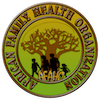 According to a 2018 Pew Charitable trusts report, the fastest-growing group of foreign-born Philadelphians from 2000 to 2016 came from Africa. Today, Southwest Philadelphia (where AFAHO’s office is located) is known as “Little Africa” with 10,000 African immigrants representing 11% of the population. According to the decennial census, between 2000 and 2012, the estimated African population tripled in Southwest Philadelphia, quadrupled in neighboring Delaware County and increased throughout Northeast and North Philadelphia. By some estimates, there are now at least 50,000 African and Caribbean immigrants and refugees (ACIR) living in the Greater Philadelphia area, constituting 8% of the total immigrant population. They come from over 30 different countries and speak dozens of different languages. Fear, language difficulties, misinformation and a lack of guidance leave many of these immigrants and refugees on the fragile edges of society, underserved and vulnerable.
According to a 2018 Pew Charitable trusts report, the fastest-growing group of foreign-born Philadelphians from 2000 to 2016 came from Africa. Today, Southwest Philadelphia (where AFAHO’s office is located) is known as “Little Africa” with 10,000 African immigrants representing 11% of the population. According to the decennial census, between 2000 and 2012, the estimated African population tripled in Southwest Philadelphia, quadrupled in neighboring Delaware County and increased throughout Northeast and North Philadelphia. By some estimates, there are now at least 50,000 African and Caribbean immigrants and refugees (ACIR) living in the Greater Philadelphia area, constituting 8% of the total immigrant population. They come from over 30 different countries and speak dozens of different languages. Fear, language difficulties, misinformation and a lack of guidance leave many of these immigrants and refugees on the fragile edges of society, underserved and vulnerable.
There are specific cultural, socioeconomic, psychosocial, and religious needs that exist among the black immigrant and refugee populations that warrant the need for culturally congruent programs that address and bridge the gaps in lack of information and specialized care and create wider access to services and resources to foster inclusion. A growing number of African immigrants have settled in various Philadelphia neighborhoods, including the West, Southwest, South and Northeast parts of the city. Longing for home, many immigrants find adaptation to American life a difficult process. In particular, Africans must learn to lead more solitary lives in Philadelphia than they would in Africa, where the daily routine is oriented around family, and one’s place in the community is understood and recognized by all. Philadelphia has one of the most notable West African populations in the United States. As of 2010, there were 25,570 people of recent African origins living in Philadelphia. The largest Sub-Saharan African populations within the city are Nigerians and Liberians.
In 2005, Philadelphia had immigrants from Ethiopia, Ghana, the Ivory Coast, Liberia, Nigeria, and Sierra Leone. By 2008, about 15,000 Liberians had immigrated to Philadelphia area, the Liberians left their native country due to two civil wars and the destruction of Liberian infrastructure. The African population is largely concentrated in West and Southwest sections of Philadelphia. However, the Cedar Park neighborhood is the only neighborhood predominantly made up of West Indian/Caribbean and Sub-Saharan African immigrants.
Philadelphia also has a large West Indian community from the Caribbean islands. The West Indian population is largely concentrated in West Philadelphia, with smaller numbers in the Southwest and Northeast sections. As of 2010, there were 24,608 people of West Indian ancestry living in Philadelphia, representing about 1.6 percent of the city, the vast majority of which are Haitians and Jamaicans. Though, the number of West Indians balloons when including other areas in the Philadelphia metropolitan area and not just the city itself. The Philadelphia area has one of the largest Jamaican populations in the country. Jamaicans.com features Philadelphia and Jamaican culture in the city. Most West Indians live in West and Southwest Philadelphia. However, the Cedar Park neighborhood is the only neighborhood predominantly made up of West Indian/Caribbean and African immigrants.
Though Haitians and Jamaicans are near even in population, Jamaicans represent the majority of West Indians in West Philadelphia, where most of the overall West Indian population lives. This is because Haitians are more evenly distributed throughout the city, outside of West Philadelphia, there are smaller numbers of Haitians in several neighborhoods in the Lower Northeast. Aside from Haitians and Jamaicans, there are also sizable numbers of Trinidadians and Bajans.

